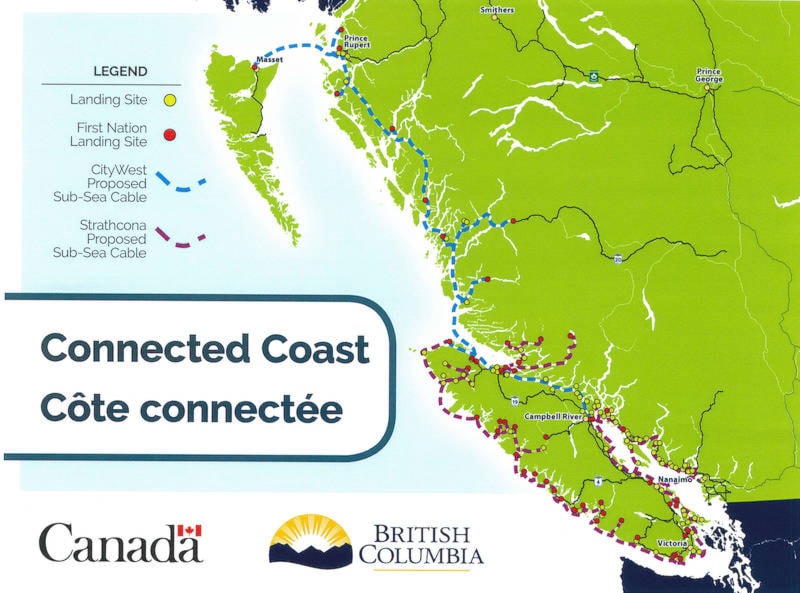Some residents south of Campbell River appear to have been left out of a plan to expand the broadband capacity in the region.
This does not necessarily mean, however, they will be losing out on expanded Internet, according to the Strathcona Regional District.
Through the recent Connected Coast project, the SRD has been working with partners in the Prince Rupert area on a plan to establish or improve high-speed Internet to many coastal communities, especially small or remote ones, in particular First Nations reserves.
RELATED STORY: Strathcona Regional District picks representation for Connected Coast
The project is funded entirely through federal and provincial grants worth of $45.4 million, and the SRD earlier this year agreed to get behind the plan. As part of the funding, of which the SRD would get $33 million, it had to set up a stand-alone corporation that will oversee the installation of undersea fibre optic cable and landing sites where the cable connects. It has also had to establish borrowing authority worth up to $6 million in the event of any cost overruns.
RELATED STORY: Strathcona Regional District creates corporation to oversee Connected Coast
While the Connected Coast project aims to link more communities, not everyone will be eligible for landing site. A list of the roughly 150 communities chosen includes locations on Cortes Island and Quadra Island, but does not include Area D south of Campbell River.
“They skipped Area D – 5,000 people,” said Rod Nugent, the Area D Ratepayers and Residents Association president before the issue came up at the regional district meeting.
He has some concerns about the omission, saying some areas close to the Campbell River in the north or to the Oyster River area in the south area have reasonable Internet but many in the middle of Area D have limited service. For Nugent, it’s not a matter of making it easier to stream or download movies and TV but rather providing infrastructure to increase economic drivers for the area, such as people working from home.
At the SRD board meeting, Area D Director Brenda Leigh, who has opposed the plan especially because the loan authorization aspect, also asked about the issue, saying there were rumours Area D was being left out.
“I’d like confirmation that Area D is part of the service,” she asked staff.
SRD Chief Administration Officer Dave Leitch responded that the areas listed referred to landing sites for cable and there are opportunities to fund a landing site.
“No area is excluded from broadband,” he said. “It doesn’t exclude anybody.”
If on the surface, it looks like a slight,
Victoria Smith, the manager of strategic initiatives for the SRD, told the Mirror that communities not included directly can still benefit in the event an Internet service provider takes advantage of the nearby upgrades to improve service for sites like the community in Area D.
Another potential factor is the newly created Tlowitsis First Nation next to Area D, which as a First Nation community could qualify as a small community.
